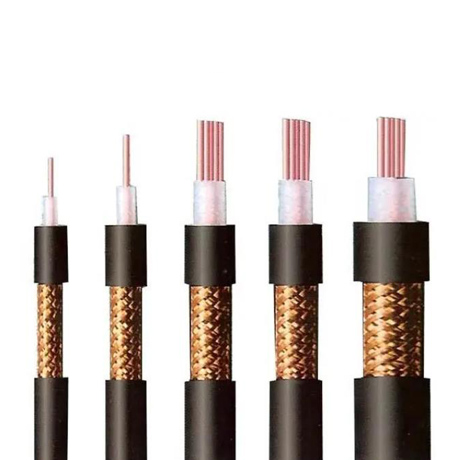

As the key transmission medium for ship electric propulsion and variable frequency speed regulation systems, Marine Variable Frequency Cables have a series of unique characteristics that are different from ordinary ship cables, mainly reflected in excellent electrical performance and anti-interference capabilities and excellent mechanical properties and environmental adaptability.

High-voltage pulse tolerance: The PWM (pulse width modulation) wave output by the inverter contains steep rising edge high-order harmonics, which will produce extremely high pulse voltage peaks (up to 2-3 times the working voltage) and strong electromagnetic interference. The insulation material and structural design of marine variable frequency cables must be able to withstand the long-term repeated impact of such high-frequency and high-voltage pulses to prevent accelerated aging or even breakdown of insulation.
Triple shielding structure: This is its core feature. Usually a triple structure of "phase shielding + total shielding + tinned copper wire braided shielding" is adopted. Phase shielding (usually wrapping/extruded semi-conductive layer outside each phase conductor) effectively suppresses interphase interference; total shielding (aluminum-plastic composite tape or other materials) provides overall electromagnetic shielding; the outer layer of high coverage tinned copper wire braided shielding enhances the ability to resist external electromagnetic interference and electrostatic discharge, and minimizes the electromagnetic radiation (EMI/RFI) and signal interference of high-frequency harmonics to surrounding equipment.
Low transmission impedance and symmetrical structure: A symmetrical three-phase three-wire or three-phase four-wire (with PE wire) structure is adopted, and the conductor twisting pitch is optimized to ensure the balance of distributed capacitance and inductance of each phase, reduce attenuation and distortion during transmission, and ensure the stability and accuracy of signal transmission.
High flexibility and bending resistance: Adapting to the narrow space and frequent vibration environment on board, the specially designed soft conductor (thin copper wire or ultra-fine copper wire twisted) and the specially formulated elastic insulation/sheath material give Marine Variable Frequency Cables excellent flexibility and repeated bending performance, which is easy to lay and repair.
Oil and chemical solvent resistance: Sheath materials (such as specially formulated PVC, halogen-free low-smoke flame-retardant polyolefins/TPE, etc.) must be able to resist the erosion of fuel oil, lubricating oil, coolant and other oils and chemical solvents commonly found in ship environments.
Temperature resistance and flame retardancy and fire protection: The working temperature level is high (such as 90°C). The insulation and sheath materials must meet the strict marine flame retardant standards (such as IEC 60332-3, bundled combustion test) while meeting the temperature resistance requirements. Some require halogen-free low-smoke properties (LSZH), which release less corrosive gas and low smoke during combustion to ensure the safety of personnel escape.
Tensile and wear resistance: The reinforced sheath or built-in tensile elements (such as aramid yarn) enhance the tensile strength and wear resistance of the cable, and adapt to installation requirements such as hoisting and towing.
Moisture and waterproof: The structural design (such as filling, wrapping, etc.) and material selection meet the resistance to humid and salt spray environments, and some require longitudinal water-blocking structures.
Strict certification and reliability guarantee:
Classification society certification: It must pass the type approval test of major global classification societies (such as CCS, DNV-GL, LR, ABS, BV, etc.) to meet their comprehensive and stringent requirements for materials, structures, electrical properties, flame retardancy, fire resistance, halogen-free and low smoke.
High-quality materials and processes: It uses high-quality conductors (usually tinned to prevent oxidation), special insulation with stable performance (such as cross-linked polyolefin XLPO) and sheath materials that meet ship regulations, and has excellent manufacturing processes to ensure long-term stable operation under complex and harsh working conditions of ships.
Marine Variable Frequency Cables provides safe, reliable and efficient power transmission and signal control solutions for ship frequency conversion systems through its carefully designed electrical shielding structure, excellent material and mechanical properties, and strict certification standards, ensuring the safe and stable operation of ship electrical systems.